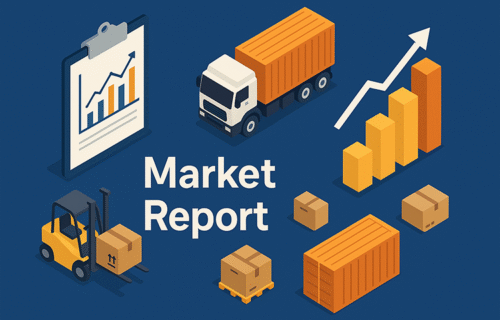India’s logistics and warehousing industry, one of the fastest-growing segments of the real estate market between 2020 and 2024, is showing clearer signs of moderation in 2025 as developers and occupiers adjust to rising costs, slowing e-commerce expansion and emerging capacity pressures in several micro-markets.
According to data from JLL India, total Grade A and B warehousing stock in the country’s top markets crossed over 530 million sq ft by end-2024, marking a near-doubling of capacity within six years. This growth was driven by a surge in e-commerce fulfilment, expanding third-party logistics operations, and the strengthening of domestic manufacturing, particularly in Tier-1 and stronger Tier-2 cities.
Industry data shows that annual leasing consistently exceeded 50 million sq ft between 2021 and 2024, reflecting robust demand across 3PLs, e-commerce, automotive, engineering and retail. However, consultants note that 2025 represents a more mature phase of the cycle. Cushman & Wakefield reports a softer investment environment this year, linked to higher land acquisition costs, infrastructure gaps and concerns over saturation in some corridors.
This shift comes after an exceptional 2020–2024 period when online retail platforms rapidly expanded last-mile networks. Knight Frank data indicates that warehousing transactions in the top cities have steadily increased since 2021, though not at the extreme levels sometimes suggested. Market analysts emphasise that the momentum remains positive but no longer at the breakneck pace seen during the pandemic-era consumption surge.
A key driver of the moderation is a deliberate slowdown in the quick-commerce segment. Platforms such as Swiggy Instamart, Blinkit and Zepto — which previously fuelled aggressive warehouse and dark-store leasing — have eased expansion to focus on profitability. Industry observers say that this has removed a major accelerant that previously contributed more than 40% of incremental warehousing demand in certain micro-locations.
Several structural constraints are also weighing on project pipelines. Rising land costs remain the biggest hurdle across Delhi NCR, Mumbai Metropolitan Region and Bengaluru, where developers face shrinking margins and more cautious capital deployment. In Tier-2 and Tier-3 cities, the challenges differ, with delays commonly attributed to land aggregation, title disputes and administrative complexities.
Infrastructure limitations present a further obstacle. Despite ongoing investment in highways, freight corridors and port capacity, India’s logistics expenditure remains around 13–14% of GDP, significantly higher than in more advanced economies. Last-mile connectivity remains uneven, and dwell times at major ports — often exceeding two days — continue to be well above global benchmarks.
At the same time, the push towards automation is reshaping cost structures. India’s warehouse automation market, valued at around USD 400–500 million, is expected to grow three- to four-fold by 2030 as facilities adopt robotics, sensors, AGVs and AI-enabled warehouse management systems. While long-term gains are expected in efficiency and safety, developers and occupiers cite barriers such as skilled-labour shortages, high import duties and upfront capex requirements.
The market is also confronting the possibility of overcapacity in selected emerging corridors. Analysts warn that vacancy risks may increase in peripheral or speculative locations where e-commerce was expected to be the primary demand engine. These include outer zones of NCR, the fringes of Bengaluru, and several early-stage logistics clusters around central and eastern India.
Despite these challenges, industry sentiment remains broadly positive. Many developers believe that the sector has entered a more sustainable growth trajectory and expect stronger capital-markets interest in the medium term. Several investors and operators are considering public listings to unlock scale and institutionalise operations — a move seen as the next milestone in the sector’s evolution.
While 2025 may not match the extraordinary expansion of the previous four years, India’s warehousing and logistics industry continues to benefit from rising domestic consumption, supply-chain diversification and the government’s continued focus on logistics reform. Most analysts agree that the long-term outlook remains robust, even as the market transitions into a more balanced and efficiency-driven phase.
© 2025 cij.world
